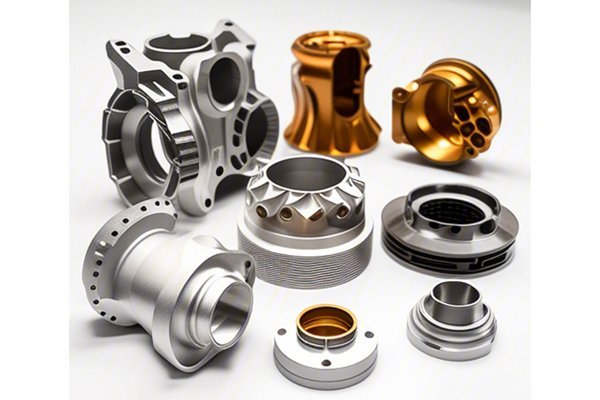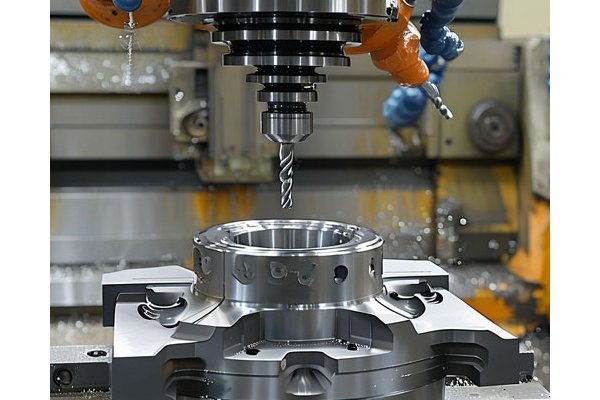Did you know that the global CNC machining market is projected to reach a whopping $100 billion by 2027? As industries across the globe continue to modernize and evolve, the demand for high-precision parts and manufacturing processes continues to skyrocket. Among the advanced manufacturing methods available, 4-axis CNC milling stands out as a game-changing technology that can significantly enhance the production of custom-designed parts. But what exactly are the benefits of leveraging this innovative technique? In this comprehensive blog, we’ll delve into the world of 4-axis CNC milling, exploring its advantages, applications, and how it can solve various manufacturing problems.
Understanding CNC Milling
Before diving into the specifics of 4-axis CNC milling, it’s crucial to understand what CNC milling entails. Computer Numerical Control (CNC) milling is a subtractive manufacturing process wherein automated machinery removes material from a workpiece to create a finished product. This technology leverages computer-aided design (CAD) software to guide the machinery in achieving precision and efficiency throughout the milling process.
Milling machines come in several axes, with each axis representing the directions in which the machine can move.
The Advantages of 4-Axis CNC Milling
Now that we have a basic understanding of CNC milling, let’s explore the compelling advantages of using 4-axis CNC milling for custom-designed parts.
Precision is a crucial requirement in industries such as aerospace, automotive, and medical device manufacturing. With the addition of the fourth axis, parts can be machined from multiple angles without repositioning the workpiece. This results in fewer errors and a higher level of accuracy, ensuring that the parts produced will meet stringent specifications and tolerances.
One of the core advantages of 4-axis CNC milling is the ability to complete complex tasks much faster than traditional methods. Without the need to manually switch the workpiece, machines can achieve more in a shorter amount of time. This not only streamlines the manufacturing process but ultimately leads to quicker lead times for customers.
The intricate shapes and designs of modern custom parts can pose a significant challenge. However, 4-axis CNC milling allows manufacturers to create complex geometries with ease. The combination of rotational and linear movements lets engineers and designers achieve features and contours that were once difficult or impossible to produce. This versatility is especially valuable in industries requiring bespoke solutions.
By leveraging the precision of CNC technology, manufacturers can minimize human error commonly associated with manual machining processes. The machinists no longer need to physically handle the workpiece, therefore, reducing the risk of malpositioning or misalignment. This results in consistent, high-quality production of parts.
Though the initial investment for 4-axis CNC milling machines may be higher than traditional 3-axis machines, the long-term savings and cost-effectiveness become apparent over time. The increased efficiency, reduced waste, and shorter lead times contribute significantly to overall cost savings. This results in a higher return on investment for businesses that adopt this technology.
The modularity of 4-axis milling machines allows engineers and manufacturers to easily adapt designs without the need for extensive retooling. Should a design change be necessary, the CNC program can be quickly modified, facilitating an agile manufacturing process that responds proactively to customer requests.
Applications of 4-Axis CNC Milling
With a strong understanding of the benefits, let’s explore some notable applications of 4-axis CNC milling across various industries:

Precision is critical in the aerospace sector, where components must meet strict regulations and standards. From turbine blades to bracketry, 4-axis CNC milling allows aerospace manufacturers to produce complex, lightweight parts that lend themselves to enhanced performance and safety.
As the automotive market embraces electric vehicles and hybrid technology, custom-designed parts are increasingly necessary. 4-axis CNC milling can produce components such as engine blocks, mounting brackets, and fixtures that are lightweight and functional, furthering automotive innovation.
The medical sector demands high precision for tools and devices that are often required to operate under strict conditions. 4-axis CNC milling enables manufacturers to create intricate devices, surgical instruments, and implants tailored for specific medical applications.
Consumer electronics often require small, detailed components that can be efficiently manufactured. 4-axis CNC milling is capable of producing parts with tight tolerances like enclosures, heat sinks, and connectors, all critical for maintaining quality and performance in tech products.
Overcoming Manufacturing Challenges with 4-Axis CNC Milling
As industries evolve, so do the challenges manufacturers face. Some of the commonly encountered problems include:
The subtractive nature of production often leads to substantial material waste. However, 4-axis CNC milling permits greater optimization of raw materials through advanced programming techniques, resulting in minimal waste during the manufacturing process.
The demand for custom, complex designs often poses difficulties in traditional machining. With its advanced capabilities, 4-axis CNC milling simplifies the creation of intricate components, giving manufacturers an edge in producing customized parts.
In today’s fast-paced market, meeting lead times is essential. The efficiency of 4-axis milling means that production timelines can be accelerated, enabling manufacturers to meet increased customer demands without compromising quality.
The digitization of industry processes has given rise to Industry 4.0, where IoT technologies streamline manufacturing processes. 4-axis CNC milling can easily integrate with automated systems, allowing for real-time monitoring and data collection to enhance operational efficiencies.
In conclusion, 4-axis CNC milling stands as a powerful solution for manufacturers seeking to create custom-designed parts with unparalleled precision, efficiency, and flexibility. With advantages ranging from enhanced accuracy and reduced production time to the ability to produce complex geometries, it becomes increasingly clear why this technology is gaining attention across various industries.
Understanding and adopting 4-axis CNC milling is not only a strategic move for manufacturers looking to remain competitive, but it also addresses the evolving challenges presented in today’s high-demand market. As industries venture deeper into customization and precision engineering, the benefits and application potential of 4-axis precision machining will continue to reshape manufacturing practices.
Whether you’re a manufacturer looking to optimize your processes or an industry professional seeking to stay informed on cutting-edge technology, 4-axis CNC milling represents a vital tool in the journey toward innovative and efficient manufacturing. Embracing this technology could very well be the key to unlocking your business’s future success. Make sure to consider the clear advantages of transitioning to ergonomic and advanced 4-axis CNC milling solutions. Your path toward efficiency and precision starts with a single, innovative decision.






